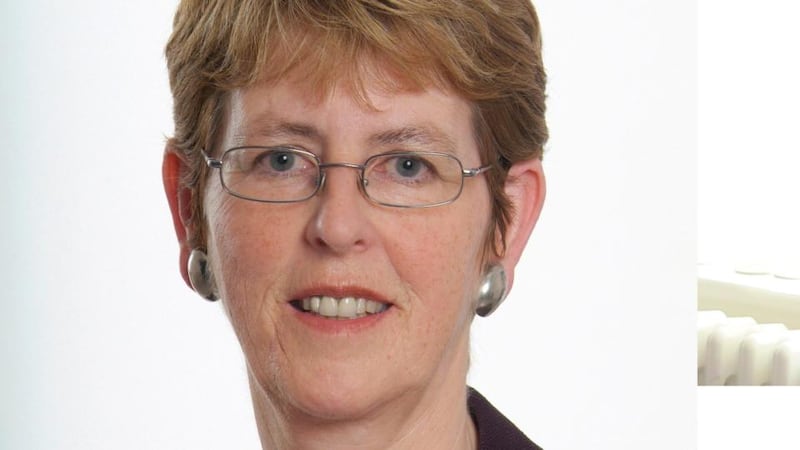Pat O'Connor was the first woman to be appointed at full professorial level – of sociology and social policy – in the University of Limerick (UL) in 1997. Almost two decades on, her new book Management and Gender in Higher Education (Manchester University Press, to be published in May 2014) focuses on the number of women working at professor and senior management level in Ireland's universities.
O’Connor broaches the subject from a particularly good vantage point. At 39 per cent, UL boasts the highest rate of female professors and associate professors in Ireland, according to her research. The national average is around 19 per cent.
This is a comprehensive study, with some of her figures going back to 1976 when the Marriage Bar was removed (it prohibited women working in secondary teaching and the civil service from continuing employment after marriage). It shows that while the gender imbalance in academia is less pronounced, women are under-represented at the highest levels.

“Severe inequality persists at senior academic grades, which is a cause for concern, but we have a very encouraging trajectory of improvement towards gender equality in higher education,” says Muiris O’Connor, head of policy and strategic planning at the Higher Education Authority (HEA). “We see it improving at all grades and this has been consistent since the late 1990s. That being said, we expected it to happen sooner because females are better educated than males and have been for some time. They form higher numbers of our graduates, and their share of academic positions more generally would indicate that they should be getting towards a fairer position at the higher grades.”
An upward trend is what the HEA, which has an obligation to promote equality, foresees continuing in Irish higher education.
But Ireland is similar to many other countries in Europe. “Figures from the EU show that women account for 20 per cent of professors and associates in Europe,” says O’Connor. “The national average is not that different. Still, progress has been slow. At UL, however, the proportion at professor level has changed dramatically over a 15-year period.”
UL’s growth rate might be impressive, but the national average is still left wanting. There are a number of potential reasons for this.
"One issue that is often overlooked is that senior (including professorial) posts are increasingly defined in a way that assumes people at that level have a care-free life," says Kathleen Lynch, a professor of equality studies at UCD and author of New Managerialism in Education: Commercialisation, Carelessness and Gender (2012).
“There is a widespread expectation in academia that you can work 24/7 at your university job. But women are society’s default care workers so 24/7 working is not a realistic option, even if they meet the eligibility criteria for a professorship.
“Doing any form of caring also impacts on eligibility per se; academic life is a self-centred one in many ways and to succeed you need to carve out time for research, especially for writing up publications, as it is publications that mostly determine promotion to professorial levels. Many people write their research and publications in the evenings, at weekends and at night.
“Those who are the primary carers of children (or vulnerable others) – mostly women – simply cannot do that. There is a serious lack of discussion of these issues in higher education, and in the knowledge industries generally, in Ireland.”
In a study Lynch did at primary and post-primary levels, she found time constraints caused similar problems even at lower levels. “We called it the ‘elastic self’ which one must be expected to be in order to succeed at senior management levels,” she says. “You need to be available all the time. This is even true for school principals.”
Other more practical forces are at play. There are a higher number of chairs in male-dominated areas than in female, for example, more in science and engineering than in the arts and humanities. That may be a separate discussion but it does highlight how the culture of male domination is more acute at top levels.
NUI Galway , which according to O’Connor has one of the lowest percentages of women professors (around 13 per cent), has a 50/50 split between lecturers above and below the bar (a term which refers to two different pay scales in academia). The same applies to their academic researchers.
"Perhaps we haven't invested enough in attracting women, or been active enough promoting equality," says Aoife Cooke, equality manager at NUI Galway. "Of course there are institutional barriers at play but if we look at the University of Limerick, only 100 miles down the road, they are substantially better off. So it can't be explained as a regional thing.
“By the same token, women are accessing permanent lectureships in NUI Galway. There are no barriers to their entry.”
Corrective intervention
For Cooke and others, the various disparities relate to the culture within any higher-education institution. "Corrective intervention is necessary in the short term," she says.
“The culture isn’t changing and it won’t change. It’s difficult to get real traction without intervention. Policies and procedures need to be strengthened as well as data collection, from an equality perspective, and a commitment to gender balance on all boards and committees responsible for making decisions and implementing policies and procedures.”
“There is a ‘care ceiling’ which also must be recognised,” says Lynch. “It’s not just true of higher education: you can see it in the Dáil, the knowledge industries, accounting and law firms. They’re all male dominated. Practically speaking, women are the primary carers and that’s not a responsibility you can walk away from and go back to when you’re not busy. They’re the default carers.”
Quality versus equality
However, like Lynch, Aoife Cooke is convinced that the main barrier for women is care-giving responsibilities. "Your 30s is the time to make a move for a full professorship, promoted on the basis of excellence, and a certain time in tenure is also taken into consideration.
“But if we changed the system so that I can produce, say, five excellent publications while I am out on maternity leave for two years, my excellence is then understood in the context of available time. The reality is that childbirth is a factor of life, and we should look at structures for recognising excellence in different forms.”
“It has also been said that women themselves are the problem,” says O’Connor. “They have babies, they lack confidence and they don’t network.
What drives actual change, however, is commitment at the top. This is absolutely critical. Change is not an inevitable thing.”
A female-friendly university?
If gender balance became a top priority at senior levels in all Irish universities, how might one institution attempt to make itself more attractive to female academics than another? What might attract the best from around the globe to come here?
“Women would look to see what kind of equality strategies exist in a university,” says Cooke. “Having aggregated data is very important, and keeps it in the mind’s eye. If that data is available and an institution has a well defined gender equality strategy, that would send a message beyond simply making bold statements about equality and ultimately attract the best women.”
For Lynch, the best way to address the issue is through improved monitoring. “There’s no proper monitoring of stats which creates public debate around any issue if discrepancies are found,” she says. “Under legislation, universities have a remit to promote equality of opportunity, but it’s not being realised. We need to see statistics coming out every year.”
“The HEA has been looking into a new approach to gender equality known as Athena SWAN,” says Muiris O’Connor.
“This is a UK-based charter for women in science which promotes certain criteria and strategies to increase equality, such as the extent to which care and responsibilities are facilitated within the scheduling of meetings. It may be said that ‘culture eats strategy for breakfast’ but I believe we are in a new phase, and I think there’s a real desire to achieve greater gender equality.”
















